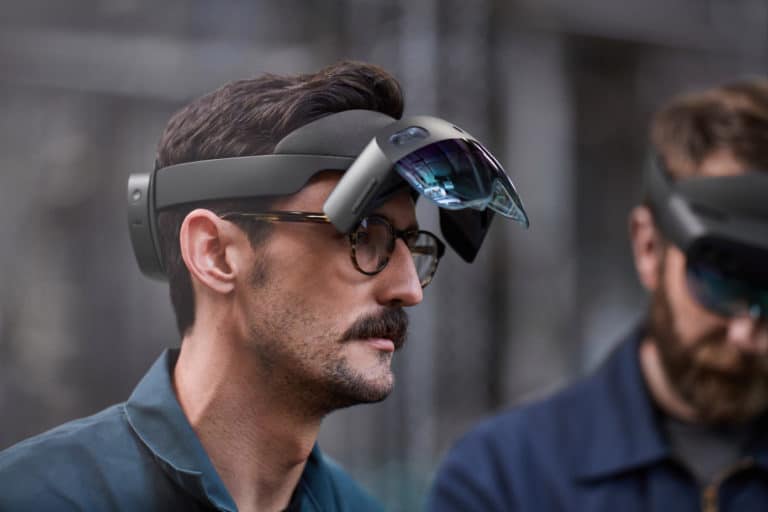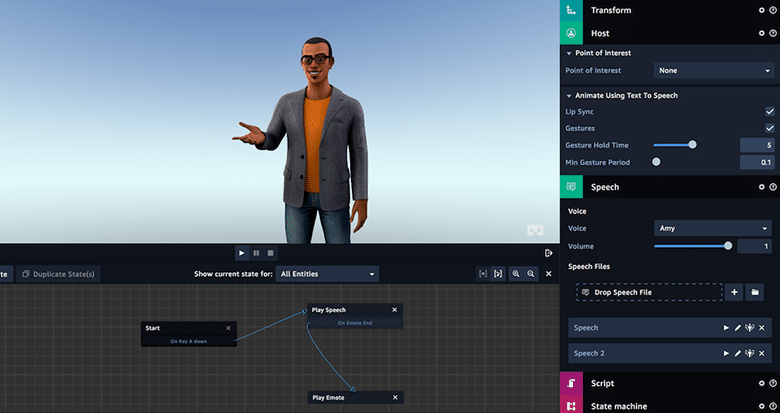
This post is an excerpt from Charlie Fink’s Book, Convergence, How the World Will Be Painted with Data. AR Insider Editor Mike Boland contributed a chapter to the book which we’ll publish here in three parts. You can see more or purchase the book here. We have book discounts available for ARtillery PRO subscribers.
Chapter 10: Has Apple Already Won, Or Has Anyone?
By Mike Boland
Part III: The Commerce & Enterprise Layers
Among tech giants investing in AR, Amazon’s moves have been the quietest but potentially most massive due to Amazon’s operational scale. AR has clear implications for boosting Amazon’s ability to sell things and improve margins — core organizational priorities.
This could play out in a few ways, including increasing the probability of purchases and decreasing the probability of returns. This will involve a visual search similar to Google’s. It’s about contextualizing items using the smartphone camera instead of text queries.
Amazon’s eventual AR cloud could be an identity layer for billions of products. Through object recognition and its growing AI arsenal, Amazon will identify and let you easily buy any product you point a camera or glance at.
Seeding a Market
In Amazon’s continued diversification, e-commerce isn’t the only endgame. Amazon Web Services (AWS) continues to rise in financial performance. And like many of the AR moves in this chapter, they could find a logical and business-supporting home at AWS.
Specifically, Sumerian is AWS’ platform that lets developers and brands create and run VR, AR, and 3D apps. It boasts relatively-little friction, such as not requiring specialized programming nor 3D graphics expertise.
Given XR’s graphical and compute-intensive needs — which AWS caters to — it makes sense to seed the market in this way. Sumerian lets users not only create 3D assets but to host and stream them on AWS.
Sumerian GM Kyle Roche acknowledges the seeding strategy but admits it’s more about supporting the shift towards visually immersive computing and helping AWS customers get there.
“AWS gets lots of credit for those types of coordinated efforts across different dimensions,” he told me. “Sometimes it’s simply that we have a lot of customers that want to get into that space so we’re trying to break down barriers to entry.”

Microsoft: The Comeback Kid
Microsoft enjoyed dominance in the PC era, followed by a decade of inferiority in the smartphone era. It now sees AR (or mixed reality in its terminology), as a way to return to grace and dominance within an emerging field. And it’s come out of the gates strong.
This is similar to Facebook’s motivation explored earlier. Given its lack of a direct user touch point (smartphone), Facebook has invested heavily to secure one for the next era (Oculus). Microsoft has done similarly by building rather than buying. And its vessel is the HoloLens.
But unlike other players in this chapter, Microsoft has placed its chips on the enterprise. This isn’t surprising given its enterprise DNA. And playing to its strengths is a key theme in CEO Satya Nadella’s notable turnaround of the software giant.
Vertical Challenge
Another key asset for Microsoft is the Windows Mixed Reality (WMR) platform. For Hololens, this achieves vertical integration of hardware and software, the same structure by which its longtime nemesis Apple rose to power.
WMR also has a leading positional tracking system which is valuable IP that Microsoft will utilize across AR and VR efforts. This includes its role as a licensed asset to power VR headsets for OEM partners like Samsung and Acer.
This means that Microsoft is vertically integrated for HoloLens while also pursuing its classic high-margin software licensing model. WMR all the while stays true to Microsoft’s DNA in enterprise applications and stems from the massive Windows installed base.
It also has Azure (their cloud, which competes with AWS) which could provide the infrastructure for secure spatial mapping data. The data could include facilities and object CAD files – comprising Microsoft’s own enterprise AR cloud.
Altogether, Microsoft is in a position to own the technology stack, spatial data layer, and favorable unit economics of licensed software. This puts it in an advantageous, and sometimes unchallenged, position among the big five.

The Plurality
After exploring the question of Why? What about the Who? Among these giants, who will pull ahead as the dominant force in AR’s coming heyday?
An argument could be made for Apple, given that it owns the OS, application layer (ARkit) and hardware. Google, Facebook, and Microsoft have hardware in play, but Apple and its halo effect have the best shot at prime real estate with current (in your pocket) and future (on your face) forms.
Apple is also building potentially-valuable spatial mapping data for roadways, as mentioned earlier. This could engender an AR Cloud on which attractive navigation and commerce apps are built, thus selling more AR glasses. It also adds to the arsenal of tools for ARkit developers.
But Apple does have an Achilles heel: Siri. AR will require not only dimensionally accurate graphics but the right content. Pervasive and ambient AR will require an intelligence layer to proactively serve targeted and pre-filtered data. The atrocity of Siri will not do.
That’s where Google has an edge. As the world’s search engine for 20 years, it has a search index and a knowledge graph on which to build an intelligence layer. That can be seen already in the far superior Google Assistant. And it has strong spatial mapping foundations, as explored earlier.
Meanwhile, Amazon’s AR cloud with its object recognition for billions of products is the most directly monetizable cloud of all. And Facebook’s cloud is the social graph — extending a 3D identity layer of social overlays from its existing ability to recognize faces and know everything about us.
But then there’s the practical reality of privacy and trust. Tech privacy issues we’ve seen so far will be nothing compared to devices that have wearable cameras and biometric sensors. This is where Facebook could be haunted by its ad model and incentive to collect data.
The likely outcome is a plurality of AR clouds in different segments of the immersive economy. And that’s good news for everyone else.

What About Everyone Else?
Beyond the big five, there are natively-focused companies like Magic Leap and Niantic. There are AR cloud startups like 6D.ai and Ubiquity 6. And there are giants to the East like Samsung (building its own AR cloud) and Huawei (building AR glasses). China could fill its own chapter.
The big five were once upstarts, unseating then-giants like IBM, Yahoo, and MySpace. Will that cycle continue, or are they too big to fail? As the New York Times’ Farhad Manjoo argues, there’s unprecedented power concentration in tech today.
If we are indeed stuck with the same cast & crew, the question is whether or not it’s a bad thing. History indicates they’ll do some evil but will also pave the roads. They’ll accelerate consumer adoption, create developer ecosystems, and buy startups.
Apple is already in the midst of an AR acquisition spree, which we believe will continue and make its way to one of the leading AR cloud startups in this book. Apple will also have to reinforce its AI arsenal and will buy rather than build.
The World is a Big Place
Those who remain independent will still hold advantages. Though the big five will rule proprietary AR clouds, their size could work against them. The incentive for walled gardens leaves nimbler players—unchained to legacy businesses—to operate across platforms and avoid conflicts from ad revenue.
“If we were to say that we’re going to sell ads on the back of this, the Disneys of the world wouldn’t want to work with us,” said 6d.ai CEO Matt Miesnieks. “They definitely don’t want to give that data to Google and Facebook. That’s turning out to be a driver of interest from these big players.”
Like any emerging sector, gaps will break open as AR shifts around and takes form. Though tech giants will be a ruling force, there’s lots of square footage (and voxels) for spatial computing across the globe — an opportunity for others to apply, support and monetize the world’s base coat of data.

For deeper XR data and intelligence, join ARtillery PRO and subscribe to the free AR Insider Weekly newsletter.
Disclosure: AR Insider has no financial stake in the companies mentioned in this post, nor received payment for its production. AR Insider Editor Mike Boland contributed a chapter to the book excerpted in this post, but receives no money for sales of the book nor has any direct financial incentive to promote it. Disclosure and ethics policy can be seen here.
